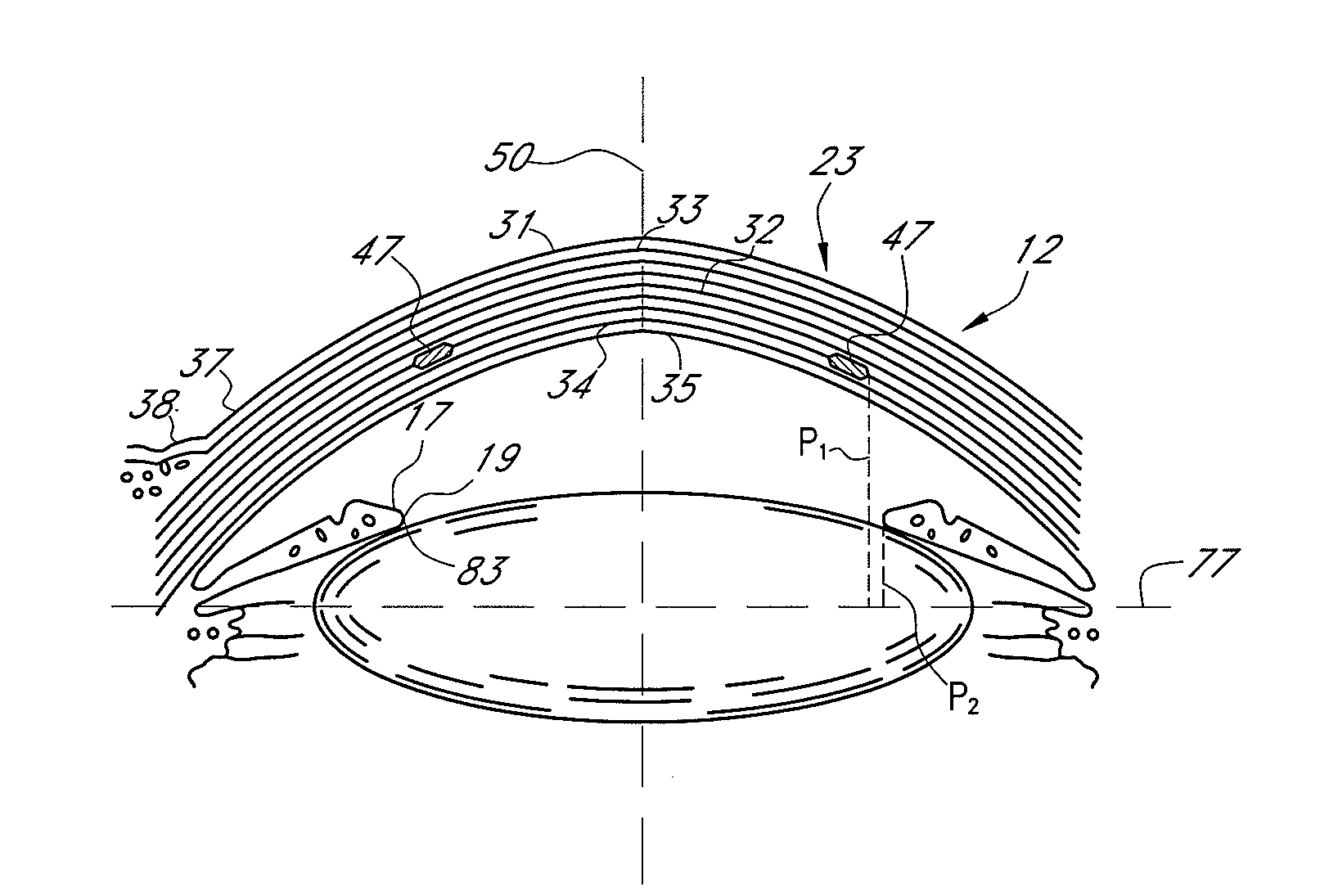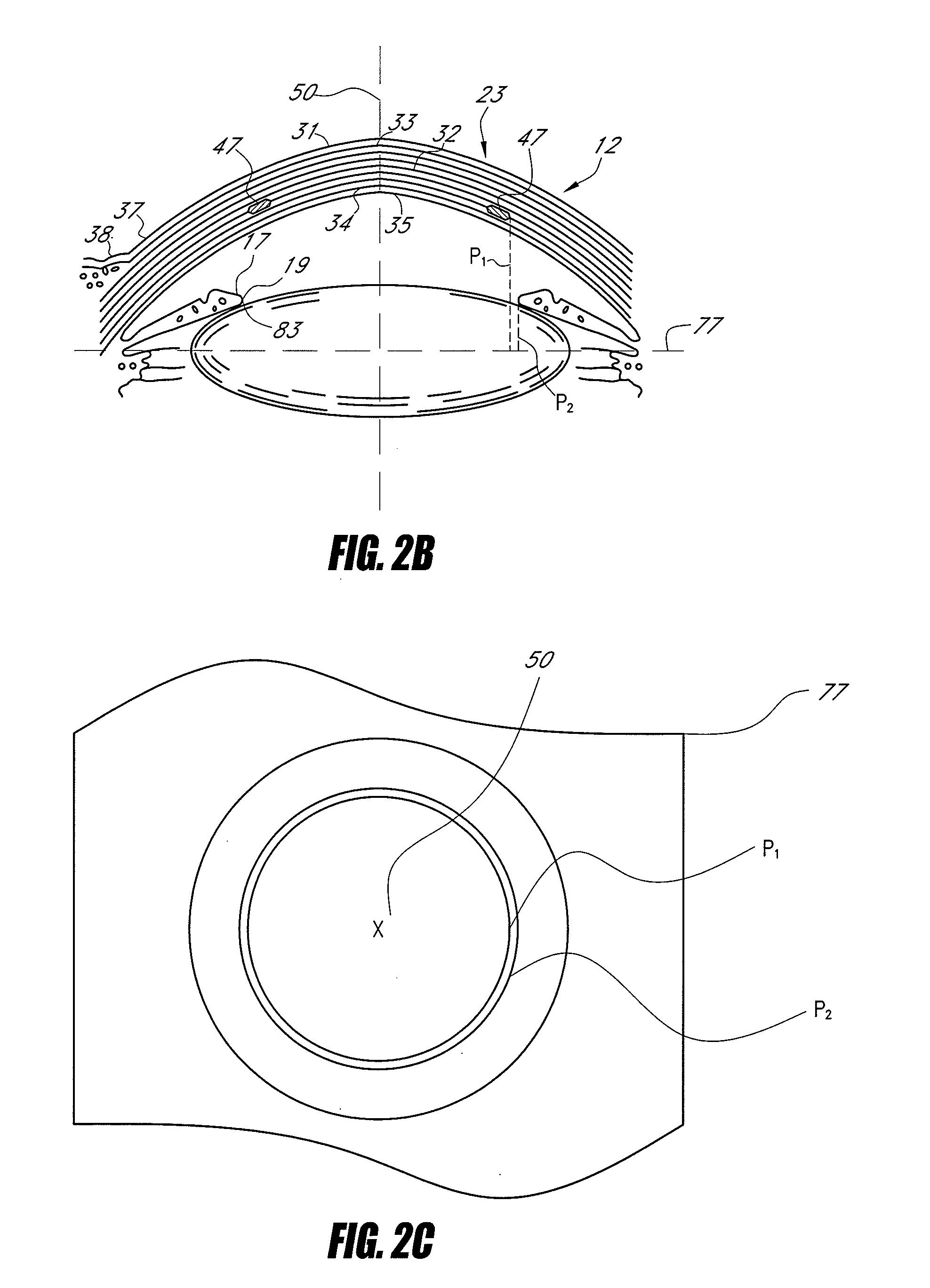Opaque corneal insert for refractive correction
a corneal insert and insert technology, applied in the field of opaque corneal insert for refractive correction, can solve the problems of eyeglasses and contact lenses having to be cleaned and periodically replaced, eyeglasses may be especially cumbersome to carry, and the error of refraction in the visual process
- Summary
- Abstract
- Description
- Claims
- Application Information
AI Technical Summary
Benefits of technology
Problems solved by technology
Method used
Image
Examples
Embodiment Construction
[0045]FIG. 1 shows a horizontal section of an eye 1, which has a generally spherical portion, referred to herein as an eyeball 10. The eye 1 includes a cornea 12, which is an anterior bulged spherical portion of the eye 1, and a sclera 13 enclosing the transparent media through which the light passes to reach the retina 18. The retina 18 includes light sensitive tissue and is located at the back of the eye 1. The sclera 13 is a fibrous protective portion and constitutes approximately the posterior ⅚ of the eyeball 10. The sclera 13 is white and opaque and the visible portion of the sclera is sometimes referred to as the “white” of the eye. The anterior ⅙ of the eyeball 10 is the cornea 12.
[0046]An interior covering or layer of the eye 1 is vascular and nutritive in function and includes the choroid 14, the ciliary body 16, and the iris 17. This interior covering maintains the retina 18. The ciliary body 16 supports a lens 21 and is involved in accommodation. The iris 17 is the most ...
PUM
 Login to View More
Login to View More Abstract
Description
Claims
Application Information
 Login to View More
Login to View More - R&D
- Intellectual Property
- Life Sciences
- Materials
- Tech Scout
- Unparalleled Data Quality
- Higher Quality Content
- 60% Fewer Hallucinations
Browse by: Latest US Patents, China's latest patents, Technical Efficacy Thesaurus, Application Domain, Technology Topic, Popular Technical Reports.
© 2025 PatSnap. All rights reserved.Legal|Privacy policy|Modern Slavery Act Transparency Statement|Sitemap|About US| Contact US: help@patsnap.com



